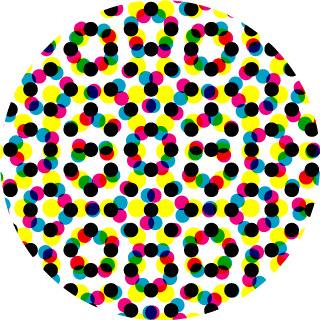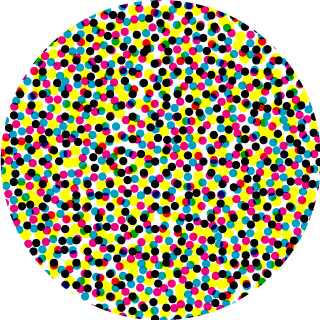
High-resolution printing is a printing method that uses line screen frequency that is higher than the usual 175 lines. Since it reduces the incidence of moiré and enables the creation of delicate and gradation expressions, it is suitable when high-quality printing is required, such as art prints, catalogs, and photo collections.
In the conventional 175-line printing where halftone dots are arranged in regular form, moiré occurs as a result of the picture pattern, such as clothing (tweed, fine stripes, etc.).
High-resolution printing reduces the incidence of moiré as the halftone dots become almost invisible.
As the halftone dots are small, it is possible to reproduce the fine-grained quality that we see in printed photographs, such as fine details and smooth gradation. The color disturbance that is brought about by dot gain* , which used to occur in conventional printing, will no longer be a problem.
* Dot gain refers to the occurrence of thick halftone dots. It refers to the condition where the breaking of halftone dots or blurring and spreading of the ink causes the dot area of the printed matter to be printed larger than the dot area on the printing plate.
Compared to conventional printing methods, the halftone dots are minute and have wide color reproducibility. Hence, there is less turbidity, and the colors are more vivid, enabling a clear and beautiful finish even for colors that are difficult to reproduce.

Conventional printing
175 halftone dots in every inch

High-resolution printing
300 halftone dots in every inch
Copyright©1996- SHINNIHON PRINTING INC.